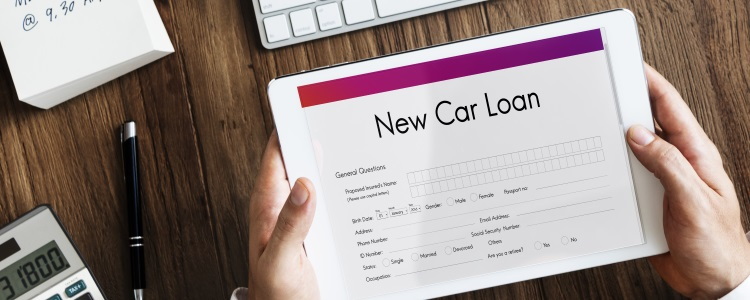Buying a car is a big decision, and just because your credit isn't as stellar as it should be doesn't mean that a new vehicle is out of reach. But, there are a lot of steps to take before getting a new car, and they start before you should even consider setting foot in a dealership.
Step 1: Know Your Credit
Your car buying experience is largely shaped by your credit score. If you have excellent credit, the process is usually quicker, and requires less documentation. If you have poor credit, however, lenders typically require many forms of documentation to help them offset the risks of financing.
Because of this, your first step is to check your credit score and reports. Your credit score can be obtained in many different ways. Certain credit card providers give their cardholders free access to their scores, while it can be gotten for a small fee from the major credit reporting agencies or directly from FICO. On the other hand, thanks to the Fair Credit Reporting Act, you're entitled to a free copy of your credit reports every 12 months from each of the three national credit bureaus: TransUnion, Experian, and Equifax.
When you know what's on your credit reports, and where your credit score stands, you keep the ball in your court, and the lender can't determine your credit for you. This way, you know you're getting a fair deal when discussing interest rates. You also have the chance to correct any errors you find in your credit reports, which can help raise your credit score.
Step 2: Set Your Budget
Knowing your credit allows you to more accurately budget for buying a new vehicle. In order to realistically calculate what you can afford to spend on a new car, you should calculate your debt to income (DTI) and payment to income (PTI) ratios, check online calculators for what you may be eligible for in a loan, and research the typical interest rates for borrowers with credit similar to yours.
Keep in mind that online tools only give estimates, and to really know for sure what your loan amount and interest rate are, you have to talk to a lender. Lenders calculate your DTI and PTI ratios, just as you can, to help determine what your maximum monthly payment for a new car loan should be.
Lenders want to make sure that you're not stretching yourself too thin in order to afford auto financing, so they cap the amount of DTI and PTI that are acceptable. Lenders don't want you to be spending more than 45 to 50 percent of your pre-tax income for all your bills, including your car and insurance payments. At the same time, they also don't want the total amount of your car payment to exceed 15 to 20 percent of your pre-tax income.
Step 3: Do Your Research
When you're buying a new vehicle, you need to make sure you're buying the right car for you, not just one that makes it look like you're keeping up with the Joneses. Before diving into a vehicle that may not be the right fit, make sure you take into account what kind of driving you do, and what your needs are.
It's a good idea to start online and look up cars you're interested in. Look at their features, safety ratings, and fuel economy, and check out consumer reviews to see what other people like and dislike about them.
Another good tip is to make a list of the features you can't live without, and equipment that you don't want under any circumstances. Find the vehicles in your price range that fit the bill, and then compare their pros and cons to narrow down your choices. This way, you can focus on only those cars to choose from when you get to a dealer. Pro tip: don't buy without taking a thorough test drive.
Step 4: Don't Go Empty-Handed
Remember in step one how credit really determines the car buying process? Regardless of your credit, it's a good idea to have a few things set aside to bring with you to the dealership. If you have poor credit, you're required to bring a few items with you that might not otherwise be necessary, such as proof of income, proof of residency, or a cosigner. Here are some of the things you're typically going to need if your credit is less than perfect:
 A valid driver's license: You can't drive your new vehicle off the lot without it, plus, lenders use your license to verify you are who you say you are.
A valid driver's license: You can't drive your new vehicle off the lot without it, plus, lenders use your license to verify you are who you say you are.- Personal references: Lenders typically require a list of six to eight personal references that don't live at your address. These should be a mix of family, friends, and coworkers that know you well. Make sure references are complete with names, addresses, and phone numbers (both home/cell and work).
- Proof of a working phone: Bad credit lenders often require you to have a landline or contract cell phone in your name. This is important so a lender and/or dealer knows they can reach out to you at all times.
- A down payment: Though a down payment may not always be needed if you have perfect credit, lenders generally require some sort of down payment if it's less than stellar. Even if it's not required, a down payment of at least 20 percent of the car's selling price gets you out of negative equity quicker, and saves you money in interest charges over the term of your loan, so it only helps you in the long run.
If you can’t make a 20 percent down payment, subprime lenders typically require a minimum of $1,000 or 10 percent of the vehicle’s selling price – whichever is less.
Shop at the Right Dealerships
Especially with bad credit, you should be careful to visit the right dealership. If you aren't going in with pre-approved financing, then you need to find a dealer that has the right type of lender for your situation, and not all of them do. If you're not sure where to turn to find the right lender, or aren't even sure what the right type of lender is, we want to help.
Here at Auto Credit Express, we specialize in helping people with bad credit find the right dealership for their situation. We work with a nationwide network of special finance dealers that have the lenders to help people with many different credit challenges. We can help you take the hassle out of your search by matching you to a local dealership! Simply fill out our easy, no-obligation auto loan request form to get the process started today.
















